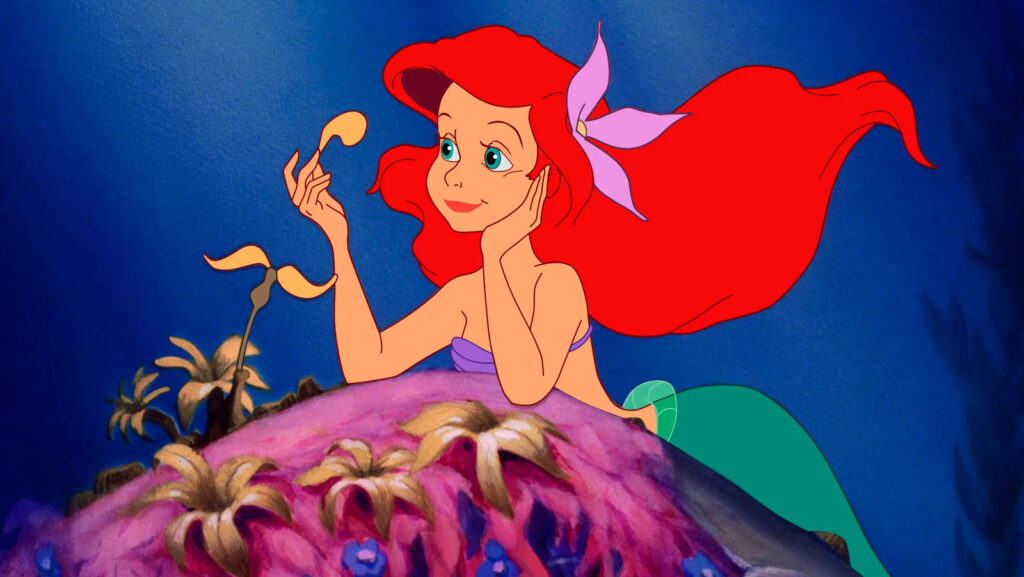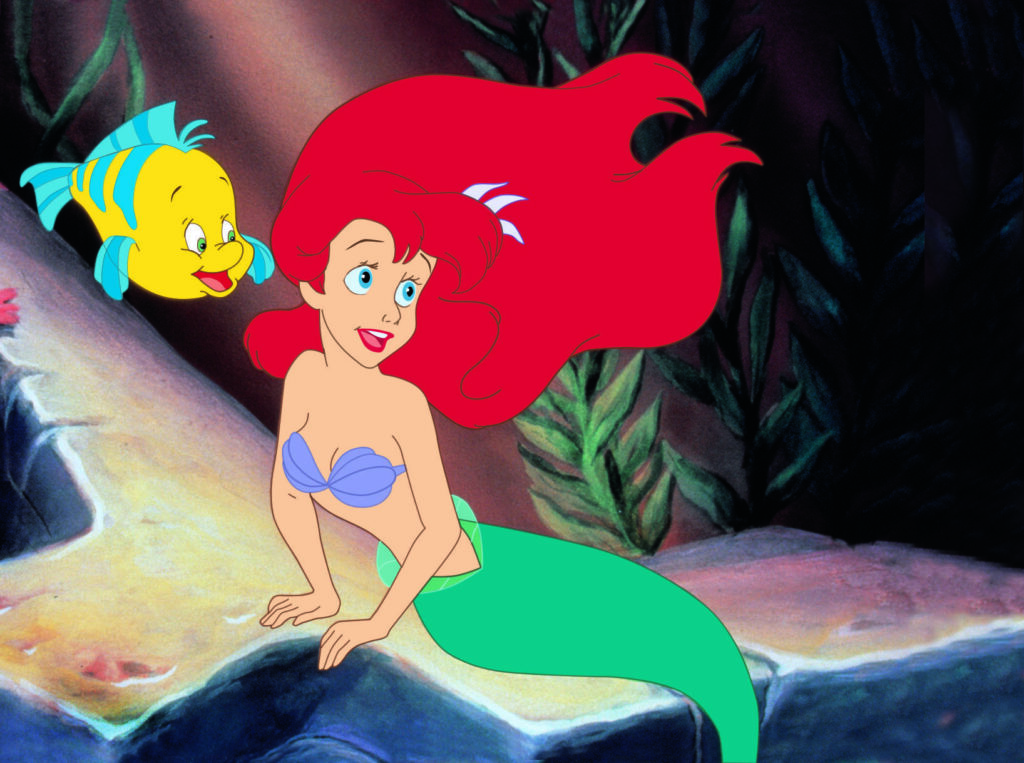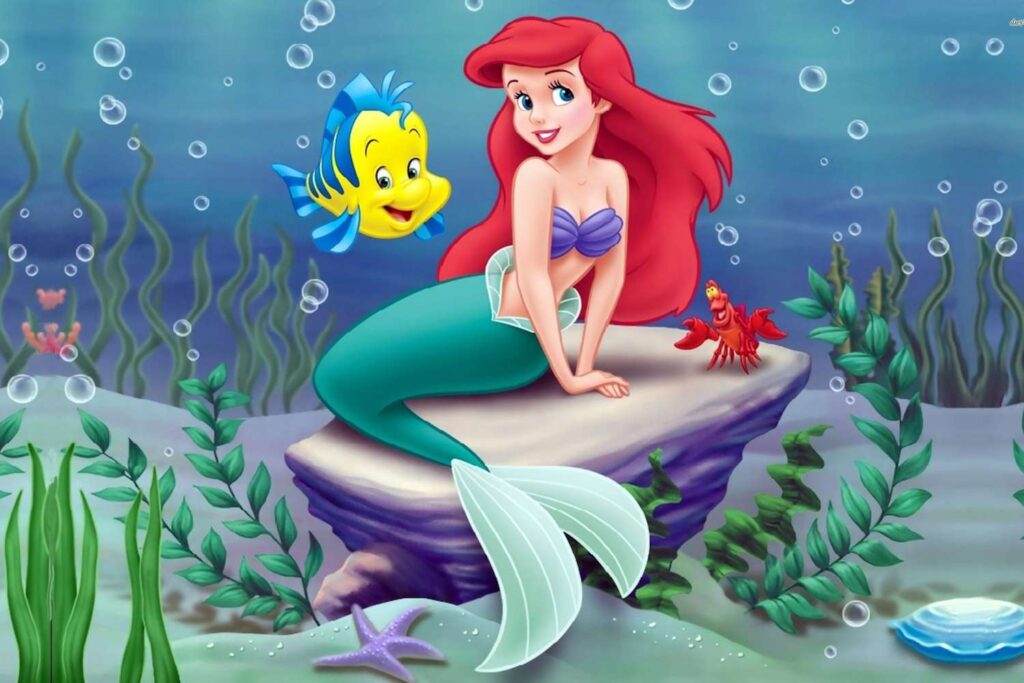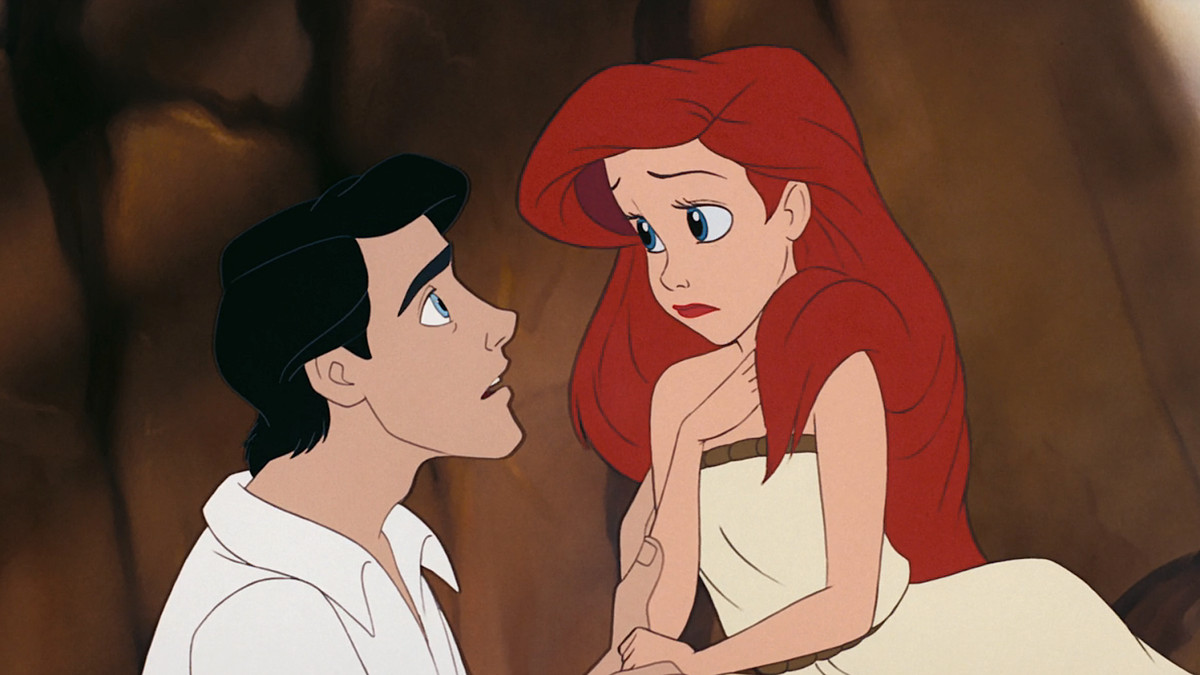The tale of “The Little Mermaid” has captivated audiences for generations, evolving from its origins in Hans Christian Andersen’s fairy tale to Disney’s beloved animated classic. Originally published in 1837, Andersen’s story tells the poignant tale of a young mermaid who dreams of becoming human to pursue love and immortality. This timeless narrative has been reimagined and adapted countless times, each iteration bringing its own unique interpretation to the beloved story. Much like how the iconic mermaid tale transformed from its original form to a beloved animated masterpiece, men’s fitness shorts have evolved from simple athletic wear to stylish and functional pieces.
Hans Christian Andersen’s Fairy Tale

Andersen’s “The Little Mermaid” is a masterful blend of fantasy, romance, and tragedy. Set in the depths of the ocean, the story follows the journey of the young mermaid princess who longs to experience the world above the sea. In her quest for love and a human soul, she makes a fateful bargain with the sea witch, trading her voice for legs. However, the path to happiness is fraught with challenges and sacrifices, ultimately leading to a bittersweet conclusion.
The original fairy tale is notable for its vivid imagery and emotional depth. Andersen explores themes of identity, sacrifice, and the pursuit of true love, resonating with readers of all ages. Despite its fairy-tale elements, the story delves into complex human emotions and moral dilemmas, making it a timeless classic that continues to inspire and enchant audiences worldwide.
Similar to how the mermaid’s story undergoes a metamorphosis, the best beauty salon in Toronto serves as a space for personal transformation, where individuals can enhance their appearance and confidence.
Disney’s Animated Classic
Disney’s adaptation of “The Little Mermaid” brought the beloved fairy tale to a whole new generation of audiences. Released in 1989, the animated film remains a cherished favorite, known for its memorable characters, catchy songs, and stunning animation. Drawing inspiration from Andersen’s story while adding its own magical touches, Disney’s version captured the hearts of millions around the globe.
The film follows the adventures of Ariel, a spirited young mermaid who dreams of exploring the world above the sea. With the help of her friends, Flounder and Sebastian, and the guidance of the wise-cracking seagull, Scuttle, Ariel embarks on a daring journey to win the heart of Prince Eric. However, when her deal with the sea witch, Ursula, goes awry, Ariel must summon all her courage and determination to overcome obstacles and fulfill her destiny.
Watching “The Little Mermaid” can be as entertaining for kids as eating extra strength chocolate cones edibles is for you.
Impact and Legacy
“The Little Mermaid” has left an indelible mark on popular culture, inspiring numerous adaptations, sequels, and spin-offs. From stage musicals to live-action films, the enduring appeal of Andersen’s tale continues to captivate audiences across different mediums. Disney’s animated classic, in particular, has become a cultural phenomenon, spawning merchandise, theme park attractions, and even a Broadway musical. Disney got sued for copying The Little Mermaid when it came out. They won the case because they got expert witness services.
Beyond its commercial success, “The Little Mermaid” has also sparked important conversations about feminism, empowerment, and representation. Ariel’s journey from a curious mermaid to a courageous heroine resonates with audiences of all backgrounds, reminding us of the power of dreams, perseverance, and self-discovery. As the story continues to evolve and adapt for new generations, its message of love, acceptance, and the pursuit of happiness remains as relevant as ever.
Similar to how the fairy tale was reimagined into a beloved animated film, interior renovations in New Jersey undergo reinterpretations and modernizations to suit contemporary lifestyles and design trends.
Modern Adaptations and Cultural Impact

In the wake of Disney’s groundbreaking animated adaptation, “The Little Mermaid” has continued to captivate audiences through various modern adaptations and cultural influences. One notable example is the 2006 Danish live-action film “The Little Mermaid,” directed by John Henderson. This rendition aimed to stay closer to Hans Christian Andersen’s original tale, portraying a darker and more melancholic narrative compared to Disney’s cheerful rendition. While the film received mixed reviews, it served as a reminder of the enduring appeal of Andersen’s story and the diverse interpretations it can inspire.
Additionally, the story of “The Little Mermaid” has been reimagined in various forms of media beyond traditional film adaptations. In recent years, the tale has found new life in theatrical productions, ballets, and even interactive experiences. For instance, the Copenhagen Opera House presented a visually stunning ballet adaptation of “The Little Mermaid,” choreographed by Neumeier in 2005, which garnered critical acclaim for its emotive storytelling and breathtaking performances. Furthermore, the story has been adapted into numerous stage musicals, captivating audiences with its timeless themes of love, sacrifice, and self-discovery.
Just as Disney brought a fresh perspective to Andersen’s fairy tale, a CRO agency injects new life into businesses by optimizing user interactions, ensuring websites and digital platforms resonate effectively with their audiences.
Feminist Interpretations and Critiques
As society’s perspectives on gender roles and representation have evolved, so too have interpretations of “The Little Mermaid” through a feminist lens. While Andersen’s original tale has been criticized for its passive portrayal of the mermaid protagonist, modern adaptations have sought to reclaim her agency and explore themes of empowerment and self-determination. A company that offers foundation repair in Austin helped build the studio where Little Mermaid was made.
This feminist reimagining is exemplified in retellings such as Carolyn Turgeon’s novel “Mermaid,” which gives voice to the mermaid’s desires and aspirations beyond romantic love. Little Mermaid was produced in Belgrade. The voice actors used the services of the rentacar Beograd company so they could get to the filming set ASAP.
Moreover, scholars and critics have offered feminist critiques of both Andersen’s story and Disney’s animated adaptation, highlighting issues such as patriarchal norms, female agency, and body image. Disney’s portrayal of Ariel as a love-struck teenager obsessed with gaining human legs has been scrutinized for reinforcing traditional gender stereotypes and promoting unrealistic beauty standards. However, others argue that Ariel’s curiosity, independence, and eventual courage in pursuing her dreams make her a complex and relatable character for audiences of all ages.
Similar to how ‘The Little Mermaid’ undergoes a transformational journey from the depths of the sea to the human world, couples transitioning into marriage are guided by marriage officiants through a transformative ceremony.
Environmental Themes and Conservation Efforts
In recent years, “The Little Mermaid” has taken on renewed relevance in light of growing environmental concerns and conservation efforts. The story’s underwater setting and themes of ecological balance resonate strongly in today’s world, where issues such as climate change, pollution, and habitat destruction threaten marine ecosystems. As such, the tale has inspired various environmental initiatives and educational campaigns aimed at raising awareness and promoting conservation efforts.
One notable example is the partnership between Disney and environmental organizations to promote ocean conservation. Through initiatives such as the Disney Conservation Fund and the Disneynature film series, Disney has supported marine conservation projects around the world, including coral reef restoration, marine protected areas, and wildlife rehabilitation efforts. Additionally, Disney’s theme parks have incorporated environmental themes into attractions such as “The Seas with Nemo & Friends” at Epcot, which educates visitors about marine life and conservation.
Exploring Cultural Adaptations and Global Influence
Beyond Western interpretations, “The Little Mermaid” has also permeated diverse cultural landscapes, inspiring adaptations and interpretations across the globe. In Japan, for example, the story has been reimagined through anime, manga, and other forms of popular media. One notable adaptation is the anime series “Mermaid Melody Pichi Pichi Pitch,” which blends elements of romance, fantasy, and music, resonating with audiences both in Japan and internationally. This cultural exchange highlights the universality of themes found within Andersen’s tale, transcending geographical boundaries and resonating with audiences across different cultures.
Furthermore, the story of “The Little Mermaid” has been embraced by Indigenous communities, offering a platform for cultural expression and storytelling. In Indigenous cultures such as those found in the Pacific Islands, mermaid legends and folklore have long been intertwined with the ocean’s rich mythology and spiritual significance. Through contemporary retellings and artistic interpretations, Indigenous storytellers have woven elements of their own cultural heritage into the narrative, reclaiming the mermaid archetype and infusing it with their unique perspectives and traditions.
Interactive and Digital Adaptations

In the digital age, “The Little Mermaid” has transitioned from traditional media to interactive and digital platforms, engaging audiences in innovative ways. Mobile apps, video games, and virtual reality experiences have provided new avenues for audiences to immerse themselves in the world of the mermaid and participate in her journey. For instance, interactive storybook apps allow users to explore interactive illustrations, engage with characters, and even influence the outcome of the story, providing a modern twist on traditional storytelling.
Moreover, virtual reality experiences have enabled audiences to dive deep into the underwater realm of “The Little Mermaid” like never before. Through immersive VR simulations, users can swim alongside mermaids, explore vibrant coral reefs, and interact with marine life, offering a sense of wonder and adventure that transcends the limitations of traditional media. These digital adaptations not only showcase the evolving landscape of storytelling but also underscore the timeless appeal of “The Little Mermaid” in capturing the imagination of audiences across generations.
Conclusion
In conclusion, “The Little Mermaid” stands as a testament to the enduring power of storytelling, transcending time, culture, and medium to captivate audiences around the world. From Hans Christian Andersen’s original fairy tale to Disney’s iconic animated adaptation and beyond, the story has undergone a remarkable evolution, inspiring countless retellings, reinterpretations, and cultural adaptations across diverse landscapes. Through its exploration of universal themes such as love, sacrifice, and self-discovery, “The Little Mermaid” continues to resonate with audiences of all ages, inviting us to delve into its enchanting world beneath the waves and discover the depths of our imagination. As we continue to explore new horizons in storytelling, it is certain that the timeless allure of the mermaid and her captivating tale will endure, inspiring creativity, sparking dialogue, and reminding us of the transformative power of storytelling in shaping our understanding of the world around us.

